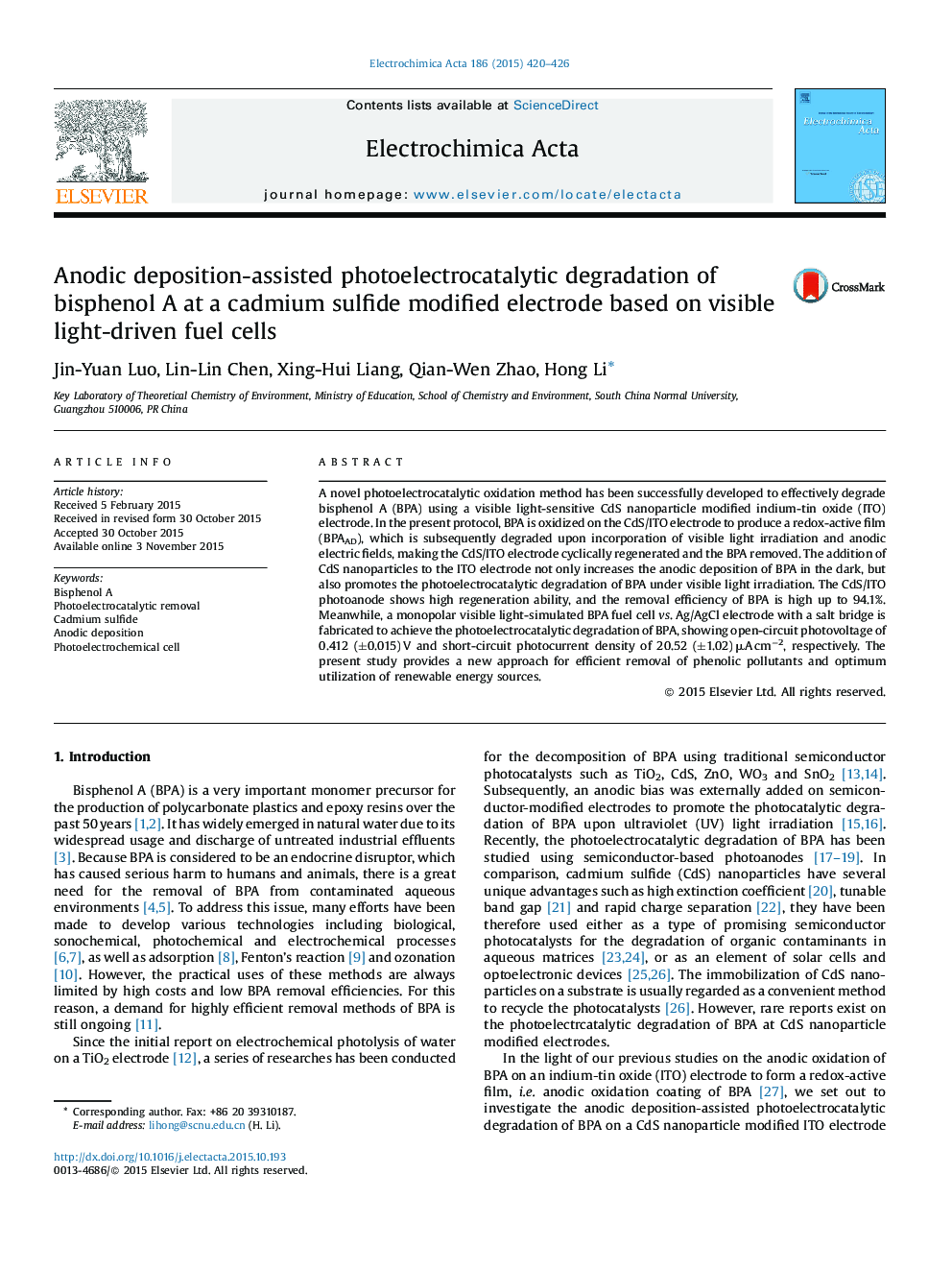| Article ID | Journal | Published Year | Pages | File Type |
|---|---|---|---|---|
| 183585 | Electrochimica Acta | 2015 | 7 Pages |
•CdS nanoparticles can largely promote anodic deposition of BPA in the dark.•Photoelectrocatalytic degradation of BPA is driven by photo-stimulated fuel cells.•CdS/ITO is regenerated in photoelectrocatalytic degradation process of BPA.•Visible light-driven BPA fuel cell exhibits several unique advantages.
A novel photoelectrocatalytic oxidation method has been successfully developed to effectively degrade bisphenol A (BPA) using a visible light-sensitive CdS nanoparticle modified indium-tin oxide (ITO) electrode. In the present protocol, BPA is oxidized on the CdS/ITO electrode to produce a redox-active film (BPAAD), which is subsequently degraded upon incorporation of visible light irradiation and anodic electric fields, making the CdS/ITO electrode cyclically regenerated and the BPA removed. The addition of CdS nanoparticles to the ITO electrode not only increases the anodic deposition of BPA in the dark, but also promotes the photoelectrocatalytic degradation of BPA under visible light irradiation. The CdS/ITO photoanode shows high regeneration ability, and the removal efficiency of BPA is high up to 94.1%. Meanwhile, a monopolar visible light-simulated BPA fuel cell vs. Ag/AgCl electrode with a salt bridge is fabricated to achieve the photoelectrocatalytic degradation of BPA, showing open-circuit photovoltage of 0.412 (±0.015) V and short-circuit photocurrent density of 20.52 (±1.02) μA cm−2, respectively. The present study provides a new approach for efficient removal of phenolic pollutants and optimum utilization of renewable energy sources.
Graphical AbstractFigure optionsDownload full-size imageDownload as PowerPoint slide
